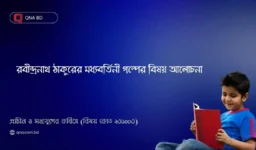Or, Describe the first two adventures of the Red Cross Knight in Spenser’s The Faerie Queene Book-I and point out their allegorical significance.
Answer: The intention of Spenser in writing The Faerie Queene, an allegorical romance) as he declares in his letter to Sir Walter Raleigh, is to present the example of a perfect gentleman, in his own language, “to fashion a gentleman or noble person in/virtuous and gentle discipline. The story of the epic runs simultaneously on two levels: On one level, it is an engaging story of heroic adventures in which the hero encounters various enemies and finally achieves victory. On the other level, it is an allegorical narrative symbolising the moral and spiritual journey of a man through innumerable temptations of sin towards the ultimate attainment of glory and truth. The Red Cross Knight is thus a symbolic figure and his various adventures also carry symbolic significance. His fight with Monster Error as well as his encounter with Archimago contains allegorical meanings.
The Red Cross Knight is both an individual and a symbol and so is Una. He stands for the moral quality of Holiness and Una stands for Truth. One needs the support of the other. The Monster Error symbolises the spiritual and religious errors that a man is likely to commit when his virtue is still untested. A man at the beginning of his life may choose the wrong path of action which can thus endanger his life. But a man of strong faith supported by his sense of truth can defeat the errors and set himself on the right path again. This allegorical meaning is clearly evident from the episode of the Red Cross Knight’s fight with Monster Error in the early pages of The Faerie Queene Book-I.
As the Red Cross Knight and his beautiful companion Una ride over the plain, a terrible storm breaks and they are forced to take shelter in a dark forest. When the storm is over, the Knight and his Lady find themselves lost in a maze of paths. They choose the path which seems most worn and follow it until they come to a cave at the head of the forest. The cave is the den of Monster Error, a hideous monster, half woman and half serpent. The monster suckling her young ones in the darkness of the cave sees the glimmering light from the armour of the Red Cross Knight. It rushes out to attack the Knight who strikes her a heavy blow on her shoulder with his sword. Error then attacks the Red Cross Knight and twists her tail about him. But when the Knight grips her throat a disgusting black vomit of poison pours out.
Sickening at the stench, the Red Cross Knight loosens his grip and Error releases from her stomach an army of her repulsive little offspring who crawl about the Knight’s feet. In desperation, the Red Cross Knight cuts off Error’s head. Her brood then devours their own mother’s blood and gorges themselves until they burst. This is the first adventure of the Red Cross Knight.
Soon afterwards the Red Cross Knight and Una resume their journey and as they proceed further they meet a very old man who seems to be very pious. This man takes them to his dwelling where they can spend the night. Actually, this old man is a magician by the name of Archimago who has a secret plan against both the Knight and Una. This Archimago tries to bring about a misunderstanding between the Red Cross Knight and Una in order to separate them from each other.
The allegorical significances of the Knight’s encounter with the Monster Error are as follows: Error lives in darkness and she is afraid of the light. This is quite understandable because errors are propagated through darkness, ignorance and superstitions. Truth, on the other hand, is light which is an enemy of darkness. Monster Error is half woman and half serpent, thus combining in herself both Eve and ( Satan. Satan came to Eve in the shape of a serpent and beguiled her She on her turn beguiled Adam and made him eat the forbidden fruit. This is the first act of Error on the part of man.
Holiness, as represented by the knight of the Red Cross, has first to seek its own perfection. Through the trial of its strength against its many adversaries. It has first to encounter with Error manifold/foul and contemptible, whose den is the human heart which it infests. Holiness overcomes Error in a dreadful encounter but a more dreadful enemy is Archimago representing Hypocrisy because his real character remains long unknown to man. He is outwardly holy but in the heart a great villain. Historically Archimage stands for Philip of Spain who was a Roman Catholic by Faith.
Again religious as well as political issues of the day are intermingled in this allegory. The Knight of the Red Cross is St. George or Reformed Church of England, fighting corruption, pride and manifold evils of papacy paganism and Catholicism. Una is Truth as embodied in the doctrines of the National English Church. Una’s parents represent humanity as well as the Old and the New Testaments, or the Classical or Christian philosophy. The fight of the Red Cross Knight with Error is the conflict between Protestantism and Catholicism. The books and papers vomited by Error allude to the scurrilous pamphlets directed against Queen Elizabeth by the Roman Catholics. The trickery and magic of Archimago represent the dangers involved in the Roman Catholic reaction and the plots of the Jesuits.
Thus in the mission of the Red Cross Knight (True religion or Holiness) and Una (Truth), we have seen that so long as, truth and holiness are united, Error (Antichrist) however founded on learning can not stand against Holiness. That is Error or Antichrist is not powerful enough to dismay Holiness armoured by the power of Truth. Holiness
must be grounded in Truth in order to remain pure and immaculate in the world. So the force of Truth fortifies Holiness. When the Red Cross Knight (Holiness) and Una (Truth) are separated, Archimago (hypocrisy) gets the chance to mislead Holiness. Thus the separation of Una from the Knight symbolises the danger of the English Church against the hypocrisy and plots of the Roman Catholics.
To conclude, the Red Cross Knight’s encounters with Monster Error and Archimago epitomize the whole moral and spiritual conflicts in Canto I of Book I. He has to fight against other forms of evil. The Red Cross Knight’s fight with them is the fight of a man against the devil, of virtue against vice. Therefore, the Red Cross Knight’s fights against the evil characters are allegorical reminders to man that all human beings have to face such evils in their journey towards virtue.



Leave a comment